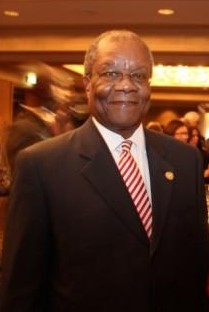
Eswatini, officially the Kingdom of Eswatini and also known as Swaziland, is a landlocked country in Southern Africa. It is bordered by Mozambique to its northeast and South Africa to its north, west and south. At no more than 200 kilometres (120 mi) north to south and 130 kilometres (81 mi) east to west, Eswatini is one of the smallest countries in Africa; despite this, its climate and topography are diverse, ranging from a cool and mountainous highveld to a hot and dry lowveld.
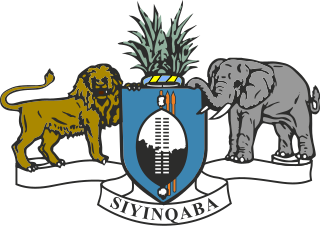
Eswatini is an absolute monarchy with constitutional provisions and Swazi law and Custom. The head of state is the king or Ngwenyama, currently King Mswati III, who ascended to the throne in 1986 after the death of his father King Sobhuza II in 1982 and a period of regency. According to the constitution of Eswatini, the king and Ingwenyama is a symbol of unity and the eternity of the Swazi nation. By tradition, the king reigns along with his mother or a ritual substitute, the Ndlovukati. The former was viewed as the administrative head of state and the latter as a spiritual and national head of state, with real power counterbalancing that of the king, but during the long reign of Sobhuza II the role of the Ndlovukati became more symbolic. The king appoints the prime minister from the legislature and also appoints a minority of legislators to both chambers of Libandla (parliament), with help from an advisory council. The king is allowed by the constitution to appoint some members to parliament for special interests. These special interests are citizens who might have been left out by the electorate during the course of elections or did not enter as candidates. This is done to balance views in parliament. Special interests could be people of gender, race, disability, business community, civic society, scholars, chiefs and so on. The Senate consists of 30 members, of which some are appointed by the king on recommendation of the advisory council and others elected by the lower house. The House of Assembly has 65 seats, 55 of which are occupied by elected representatives from the 55 constituencies around the country, 10 appointed by the king on recommendation of the advisory council and the attorney general is the ex-officio member. Elections are held every five years.

Artifacts indicating human activity dating back to the early Stone Age have been found in the Kingdom of Eswatini. Prehistoric rock art paintings date from c. 25,000 B.C. and continuing up to the 19th century can be found in various places around the country.
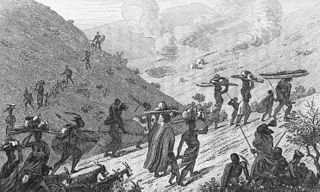
Mfecane, also known by the Sesotho name Difaqane or Lifaqane, was a period of widespread chaos and warfare among indigenous ethnic communities in southern Africa during the period between 1815 and about 1840.

The Swazi or Swati are a Bantu ethnic group of Southern Africa, predominantly inhabiting modern Eswatini and South Africa's Mpumalanga province. The Swati are part of the Nguni family that can be archaeologically traced in East Africa where the same tradition, beliefs and cultural practices are found. The Swati share a unique experience, culture and Royal lineage. This lineage is exclusive to the inhabitants of Eswatini, even though there have been more Swazi people that have moved to South Africa and the United Kingdom in the 20th century. The original inhabitants of Eswatini no longer reside in Eswatini as a majority population while some remain in the land. The Swazi people and the Kingdom of Eswatini today are named after Mswati II, who became king in 1839 after the death of his father King Sobhuza who strategically defeated the British who occupied Swaziland. The Kingdom of Swaziland was a region occupied by the San people of Southern Africa and the current Swazis came in from North Eastern regions through to Mozambique and eventually Swaziland in the 15th century. Mixtures with the San people and other Nguni tribes occurred. Their royal lineage can be traced to a chief named Dlamini I; this is still the royal clan name. About three-quarters of the clan groups are Nguni; the remainder are Sotho, Tsonga, others North East African and San descendants. These groups have intermarried freely. There are slight differences among Swazis as a nation with varying features and skin tones yet Swazi identity extends to all those with allegiance to the twin monarchs Ingwenyama "the Lion" and Indlovukati "the She-Elephant". The dominant Swati language and culture are factors that unify Swazis as a nation since there is no other language spoken except for English.

Sobhuza II, KBE was the Paramount Chief and later King of Swaziland for 82 years and 254 days, the longest verifiable reign of any monarch in recorded history. Sobhuza was born on 22 July 1899 at Zombodze Royal Residence, the son of Inkhosikati Lomawa Ndwandwe and King Ngwane V. When he was only four months old, his father died suddenly while dancing incwala. Sobhuza was chosen king soon after that and his grandmother Labotsibeni and his uncle Prince Malunge led the Swazi nation until his maturity in 1921. Sobhuza led Swaziland through independence until his death in 1982. He was succeeded by Mswati III, his young son with Inkhosikati Ntfombi Tfwala, who was crowned in 1986.
Mswati II, also known as Mswati and Mavuso III, was the king of Eswatini between 1840 and 1868. He was also the eponym of Eswatini. Mswati is considered to be one of the greatest fighting kings of Eswatini. Under his kingship, the territorial boundaries of Eswatini were greatly increased. Mswati was the son of Sobhuza I and Tsandzile Ndwandwe who after ruling as Queen Mother became Queen Regent after the death of her son. After the death of Sobhuza, Mswati inherited an area which extended as far as present day Barberton in the north and included the Nomahasha district in the Portuguese territory of Mozambique. Mswati’s military power, initially suppressed by infighting with his brothers Fokoti, Somcuba and Malambule, was increased in the late 1850s and thereafter. When Mswati's armies attacked organized forces of other Bantu tribes or nations, the goal was initially plunder in the form of cattle and captives, rather than incorporation into one political unit. During this period the arrival of Trekboers, in what would become the Transvaal republic, marked the first contact between Swazis and European settlers. Mswati greatly extended the boundaries of the Swazi territory beyond that of the present state with military outposts and royal villages outposts such as Mbhuleni, on the upper Komati River at the foot of the Mkongomo Mountains, south of Badplaas, Mekemeke which is east of the Mbayiyane Mountains, situated east of Mantibovu. The death of Mswati II in July 1868 ended the era of Swazi conquest, territorial expansion and resulted in unification of various people into one nation.
Eswatini Broadcasting and Information Service is the state owned broadcast and print information provider of Eswatini. It was founded in 1966 as a radio broadcaster, and was merged with print media in the early 1970s. It is a member of the Commonwealth Broadcasting Association. Since 1991 it has been under the Ministry of Broadcasting, Information and Tourism and is responsible for:
- Radio and television broadcasting services;
- Newspapers, magazines and other printed governmental publications;
- Government information services including Internet;
- Accreditation of foreign news reporters and correspondents operating in Eswatini.
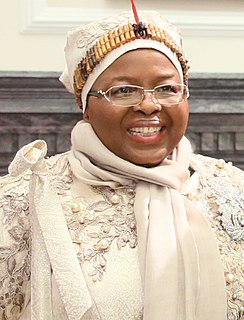
Queen Mother Ntfombi, Ndlovukati of Eswatini is the current Ndlovukati and joint head of state of Eswatini, serving since 1986. She was also regent of Eswatini from 1983 to 1986. She is the mother of King Mswati III.
Sobhuza I was king of Swaziland, from 1815 to 1836. Born around 1780, his father was Ndvungunye, and his mother was Somnjalose Simelane. He was called Somhlolo, "the Wonder," upon his birth because his father Ndvungunye died as a result of being struck by lightning. When Sobhuza was king, Lojiba Simelane instead of his mother Somnjalose was Queen Mother because Somnjalose was an inhlanti or support bride to Lojiba. Somhlolo is a greatly revered king of Swaziland. He had his first royal capital or kraal at Zombodze in the Shiselweni region, but moved it north to new Zombodze in central Swaziland. Swazis celebrate Somhlolo Day every September 6 as their Independence Day and the national stadium is named Somhlolo stadium. Sobhuza was succeeded by his son Mswati II and his wife Tsandzile Ndwandwe as Queen Mother after a short regency by Queen Lojiba Simelane. Sobhuza by the time of his death a conquered a country claimed to be reaching modern day Barberton in the north, Carolina in the west, Pongola River in the south and Lubombo Mountains in the east.

Lobamba is the traditional, spiritual, and legislative capital city of Eswatini, seat of the Parliament, and residence of the Ntombi, the Queen Mother. Mswati III lives about 10 kilometres (6.2 mi) away at the Lozitha Palace. The King and Queen Mother participate in annual December and January Incwala ceremonies and August and September Reed Dancees at the Royal Kraal.

The status of political parties in Eswatini is not clearly defined.

The House of Dlamini is the royal house of the Kingdom of Eswatini. Mswati III, as king and Ngwenyama of Swaziland, is the current head of the house of Dlamini. Swazi kings up to the present day are referred to as Ingwenyama and they rule together with the Queen Mother who is called Indlovukati. The Swazi kings, like other Nguni nations, practice polygamy and thus have many wives and children.
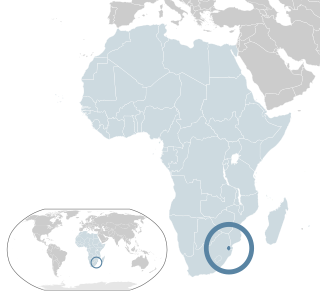
Lesbian, gay, bisexual, and transgender (LGBT) rights in Eswatini are limited. LGBT people face legal challenges not experienced by non-LGBT residents. According to Rock of Hope, a Swazi LGBT advocacy group, "there is no legislation recognising LGBTIs or protecting the right to a non-heterosexual orientation and gender identity and as a result LGBTI cannot be open about their orientation or gender identity for fear of rejection and discrimination". Homosexuality is illegal in Eswatini, though this law is in practice not enforced.

The following outline is provided as an overview of and topical guide to Eswatini:

Princess Sikhanyiso Dlamini is the current Minister of ICT of Eswatini and eldest daughter of King Mswati III of Eswatini.
Prince Sozisa Dlamini of Swaziland was Chief of Gundvwini. He became the Authorized Person of Swaziland from 1982 to 1985 after the death of King Sobhuza II, and in 1983 was briefly the acting Regent of the country, after he deposed Queen Dzeliwe. From 1983 he was Authorized Person to the new Queen Regent, Ntombi, with greater powers. Although lacking the title, he was for most purposes the de facto ruler of the country. He fell from power in July 1984, after being accused of planning a coup, and was suspended as Authorized Person until Queen Ntombi terminated his appointment on 1 November 1985.
Ndvungunye was King of Swaziland from 1780 until his death in 1815 after succeeding his father, King Ngwane III following a very brief regency of Indlovukati LaYaka Ndvwandvwe. Very little has been recorded of the quality of leadership under his reign. Ndvungunye built his residence or Sigodlo near Mhlosheni on feet of the eMhlosheni hills in NShiselweni, the south east of modern Swaziland near Zombodze, where his father Ngwane had settled during his reign. His rule thus indicated a period of limited expansion and consolidation which is overshadowed by that of his son King Sobhuza I. The NShiselweni settlements established under his reign which he placed under the guardianship of his chief Sukumbili Mbokane would not however provide a solid foundation for the future Swazi state as indicated by attacks after his death on Sobhuza by Ndvwandvwe chiefs. Ndvungunye died around 1815 after being struck by lightning. Ndvungunye was married to Lojiba Simelane and Somnjalose Simelane. It was with the latter that he had his son Sobhuza I. Lojiba however became Queen mother as she was a senior sister to Somnjalose. Sobhuza I became the king in 1815 after the regency of Queen Lomvula Mndzebele.
